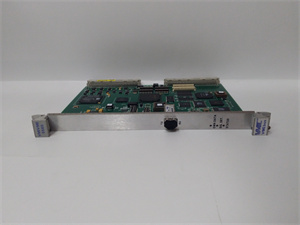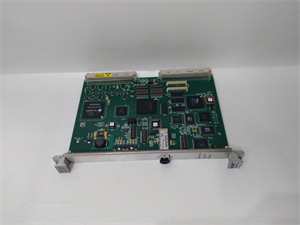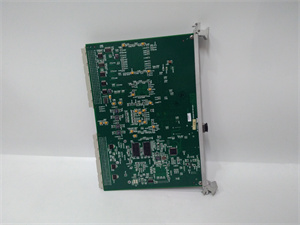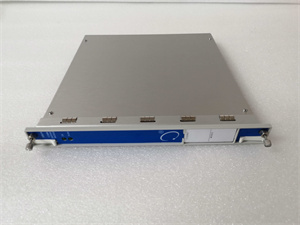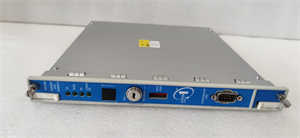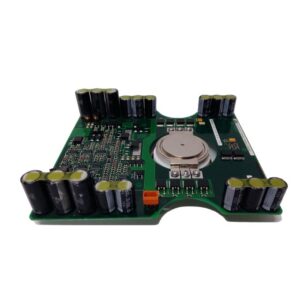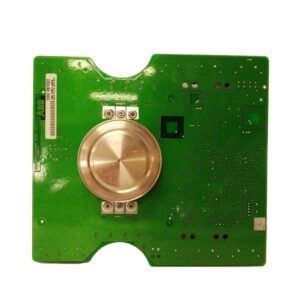Description
VMIVME-5565 Product Specification
1. Product Overview
The VMIVME-5565 is a high-speed reflective memory (RFM) module designed by GE Fanuc for VMEbus-based industrial and embedded systems. Part of the VMxxx-5565 family (including PCI and PMC variants), this module enables real-time data sharing across up to 256 nodes via a fiber optic network, with transfer rates up to 174 MB/s. Engineered for deterministic communication, the VMIVME-5565 supports 64 MB or 128 MB SDRAM, dual DMA channels, and software-transparent data synchronization, making it ideal for distributed control systems in aerospace, defense, and industrial automation.
2. Technical Parameters
| Parameter | Specification |
|---|---|
| Brand | GE Fanuc |
| Model | VMIVME-5565 |
| Bus Interface | VMEbus (32-bit, 33 MHz) |
| Memory Capacity | 64 MB or 128 MB SDRAM |
| Network Type | Fiber optic (daisy chain ring) |
| Data Rate | 2.12 Gbaud (serial); 47–174 MB/s (packet) |
| Node Support | Up to 256 nodes |
| Fiber Distance | Multimode: 300 m; Single-mode: 10 km |
| Packet Size | 4–64 bytes (dynamic) |
| Interrupts | 4-level user-definable (node-specific/broadcast) |
| Voltage | +5V DC (VMEbus); +3.3V DC (module) |
| Dimensions | 160 mm × 100 mm (VME 6U form factor) |
| Operating Temperature | 0°C to +55°C (standard); -40°C to +85°C (extended, optional) |
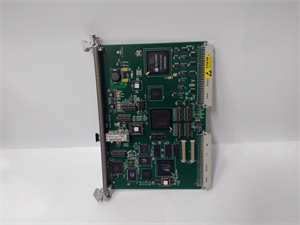
VMIVME-5565
3. Key Advantages & Features
- Real-Time Data Synchronization: Reflective memory writes data to all nodes simultaneously with <10 μs latency, eliminating processor intervention.
- Scalable Architecture: Daisy chain topology supports mixed node types (VME/PCI/PMC) for flexible system integration.
- Redundant Transfer Mode: Error-correcting protocol ensures data integrity in harsh environments (bit error rate <10⁻¹²).
- Low Overhead: DMA-driven operation reduces host CPU load by 90% compared to traditional TCP/IP networks.
- Hot-Swap Capability: Field replaceable without system shutdown (GE-certified: <20-minute replacement).
4. Application Areas & Use Cases
Industries:
- Aerospace (flight simulators, avionics networks)
- Defense (military radar, missile guidance systems)
- Industrial Automation (robotics, machine vision)
Case Study:
A U.S. defense contractor deployed VMIVME-5565 modules in a radar array system. The 256-node network synchronized sensor data at 174 MB/s, reducing processing latency by 75% compared to legacy Ethernet. Result: 99.99% uptime in thermal cycling tests (-40°C to +70°C) and 50% reduction in system weight via fiber optic cabling.
A U.S. defense contractor deployed VMIVME-5565 modules in a radar array system. The 256-node network synchronized sensor data at 174 MB/s, reducing processing latency by 75% compared to legacy Ethernet. Result: 99.99% uptime in thermal cycling tests (-40°C to +70°C) and 50% reduction in system weight via fiber optic cabling.
5. Competitor Comparison
Compared to similar VMEbus memory modules:
- Higher Node Density: 256 nodes (vs. 128 nodes in most alternatives).
- Faster Throughput: 174 MB/s (64-byte packets) vs. 100 MB/s typical for 竞品.
- Dual Redundancy: Optional dual-ring topology (not standard in comparable products).
- Memory Flexibility: Configurable 64/128 MB (vs. fixed 64 MB in most models).
VMIVME-5565
6. Selection Guidelines
- Memory Requirements: 64 MB for basic data sharing; 128 MB for high-resolution video/audio streams.
- Fiber Type: Multimode for short-range (<300 m), single-mode for long-distance (>1 km).
- Environment: Choose conformal coating (optional) for humidity/chemical exposure (IP65-rated variants available).
- Compatibility: Verify VMEbus backplane version (Revision 2.6+ recommended for 6U systems).
7. Installation & Maintenance Notes
-
Fiber Cabling: Use APC (angled physical contact) connectors to minimize signal loss; avoid bending radii <25 mm.
-
Node Addressing: Set unique IDs (0–255) via jumpers; verify with GE’s RFM Configuration Tool.
-
Firmware Updates: Regular updates via GE’s Proficy software (critical for protocol enhancements).
-
ESD Protection: Ground module chassis to prevent electrostatic damage (ESD sensitivity: Class 3B).

